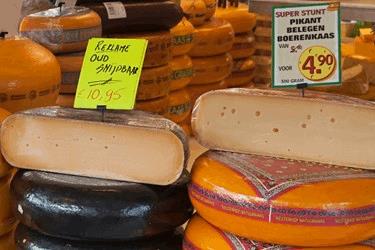A New Whey Forward: Potential For Reuse Through RO In The Dairy Industry

By Sara Jerome,
@sarmje

It can take up to 60 liters (or 15.8 gallons) of water to make just a kilogram (or 2.2 pounds) of processed milk. That’s why water scarcity is a major concern for the dairy industry.
Researchers from the University of Nebraska are looking for ways to make dairy processes more water-efficient. In recent study published by The Journal of Dairy Science, they examined the potential for reusing water from whey, which is created when cheese is made.
“The findings provide scientific evidence to promote the safety of reuse of reconditioned water in food processing plants, contributing to building a culture of water conservation and sustainable production throughout the food supply chain,” the study said.
The findings show that today’s food processing policies may need an update.
“Current regulations indicate that only potable water may be used to clean food contact surfaces and equipment surfaces, but reconditioning and reuse of water is a promising alternative currently acceptable for initial cleaning of fruits and vegetables as well as scalding of meat and poultry,” according to an Elsevier Health Sciences write-up about the study.
Lead author Yulie Meneses weighed in on the significance of the results.
"Using the combined ultrafiltration and reverse osmosis system, 47 percent of water can be recovered from whey," Meneses said.
"This demonstrates the viability of our method for wastewater, as the cleaning efficiency was comparable to potable water in clean-in-place systems," Rolando Flores, the project leader on the study, added.
What’s New in Food Technology & Manufacturing magazine described the process used by these researchers.
“In their study Yulie Meneses and Rolando Flores tested wastewater from whey of cheddar cheese by subjecting it to reverse osmosis and ultrafiltration, as well as an additional step of spray drying. The resulting reconditioned water was used to clean stainless steel surfaces that had a biofilm, with promising results from both bacterial counts and scanning electron microscopy analysis,” the report said.
The upshot?
“Because of its potential in terms of revenue and conserving natural resources, these wastewater reclamation techniques are highly interesting. More research is required, however, to further elucidate risks and broader environmental issues as they relate to the techniques in this study,” the magazine said.
For similar stories visit Water Online’s Water & Wastewater Treatment For The Food & Beverage Industry Solutions Center.
Image credit: "Cheese," © 2011 Pieter v Marion, used under a AttributionShareAlike 2.0 Generic license: http://creativecommons.org/licenses/bysa/2.0/
